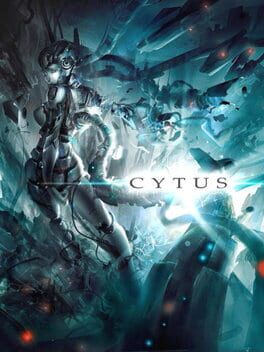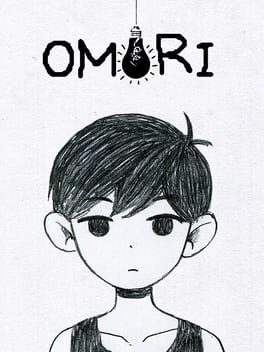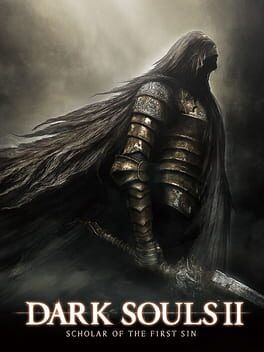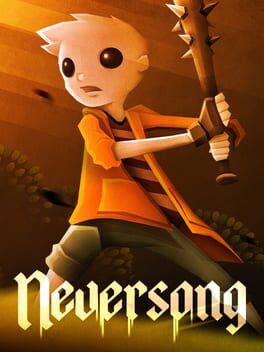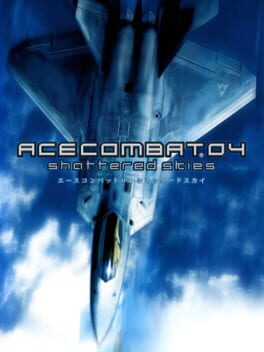Enzon
14 reviews liked by Enzon
Cytus
2012
Omori
2020
After recently having a complete blast finishing both Dark Souls III and Dark Souls Remastered, I was mildly tentative when it was finally time to begin my Dark Souls II playthrough. While I'd heard nothing but endless praise for the other two (alongside many of FromSoft's games in general), Dark Souls II was a different story altogether.
For a series and developer so beloved, it was strange to see what was something of a black sheep within it's catalogue. I was a bit worried... Now after about 25 hours I can say that my worries were entirely unfounded. Dark Souls II: Scholar of the First Sin, while absolutely being the most flawed game in the trilogy, is still great.
First things first... they weren't joking about the ganks. I'm honest to god traumatized by any unsuspecting looking loot because I know there's a 85% chance I'm getting jumped the moment I touch it. At first I found this incredibly frustrating, but eventually I started to find it funny.
It was like man what dumb shit are they gonna try pull next? Loot at the end of a plank after you've cleared the area? Here come 5 guys that weren't even spawned yet! Finally beat that elite mob? Here come 5 guys that weren't even spawned yet! Bonfire? Here come 5 guys that weren't even spawned yet! Is it clear that I've lost my mind?
Moving on, maybe this isn't the case for other people, but Dark Souls II feels like the most properly balanced in terms of level progression of the series for me. A problem I had in Dark Souls Remastered and Dark Souls III was that I was routinely over-levelled and it made those games a lot easier than they should be.
I played Dark Souls II the exact same way I played the other two with a heavy focus on taking my time and exploring, killing every mob, which naturally lead to my issue of being over-levelled. However in Dark Souls II it never felt like I was having it too easy. I felt like I was at the right level for each area which was nice as I wasn't put in situations where I could stat-check my way past bosses, a problem I'd had in the other games.
Speaking of bosses, while there were a few standouts (shoutout Fume Knight and Burnt Ivory King), I feel that Dark Souls II has the worst boss design out of the three. What's worse is I can't help but think that a lot of the boss design philosophy in Elden Ring is ripped straight from this game.
I also want to say that this game has some of the worst areas I've played in Dark Souls with some of the most annoying enemy placement I've ever seen.
All that said though, I still really enjoyed this game. I can understand many of the criticisms it faces, but I personally think Dark Souls II is a bit underrated. To me Dark Souls II was another great entry into the Dark Souls trilogy.
There were many cool and memorable NPCs (shoutout Lucatiel) and questing felt like a step up from Dark Souls Remastered. Movement and combat took a little getting used to as it has it's own unique flavor much like Dark Souls Remastered and Dark Souls III have their own flavors; but ultimately once you master it that same sense of fulfillment is there.
While I can't say it was as flawless an experience as Dark Souls Remastered and Dark Souls III were, I think Dark Souls II is able to stand on its own two feet as a great game just like the other two -with what felt like higher highs than Dark Souls Remastered (with admittedly many lower lows).
If you like souls games and were also tentative about Dark Souls II I'd heavily recommend you clear your biases and give the game a fair chance. After all there's a perfectly great Dark Souls experience right here just waiting to be played, don't miss out on it.
4/5.
For a series and developer so beloved, it was strange to see what was something of a black sheep within it's catalogue. I was a bit worried... Now after about 25 hours I can say that my worries were entirely unfounded. Dark Souls II: Scholar of the First Sin, while absolutely being the most flawed game in the trilogy, is still great.
First things first... they weren't joking about the ganks. I'm honest to god traumatized by any unsuspecting looking loot because I know there's a 85% chance I'm getting jumped the moment I touch it. At first I found this incredibly frustrating, but eventually I started to find it funny.
It was like man what dumb shit are they gonna try pull next? Loot at the end of a plank after you've cleared the area? Here come 5 guys that weren't even spawned yet! Finally beat that elite mob? Here come 5 guys that weren't even spawned yet! Bonfire? Here come 5 guys that weren't even spawned yet! Is it clear that I've lost my mind?
Moving on, maybe this isn't the case for other people, but Dark Souls II feels like the most properly balanced in terms of level progression of the series for me. A problem I had in Dark Souls Remastered and Dark Souls III was that I was routinely over-levelled and it made those games a lot easier than they should be.
I played Dark Souls II the exact same way I played the other two with a heavy focus on taking my time and exploring, killing every mob, which naturally lead to my issue of being over-levelled. However in Dark Souls II it never felt like I was having it too easy. I felt like I was at the right level for each area which was nice as I wasn't put in situations where I could stat-check my way past bosses, a problem I'd had in the other games.
Speaking of bosses, while there were a few standouts (shoutout Fume Knight and Burnt Ivory King), I feel that Dark Souls II has the worst boss design out of the three. What's worse is I can't help but think that a lot of the boss design philosophy in Elden Ring is ripped straight from this game.
I also want to say that this game has some of the worst areas I've played in Dark Souls with some of the most annoying enemy placement I've ever seen.
All that said though, I still really enjoyed this game. I can understand many of the criticisms it faces, but I personally think Dark Souls II is a bit underrated. To me Dark Souls II was another great entry into the Dark Souls trilogy.
There were many cool and memorable NPCs (shoutout Lucatiel) and questing felt like a step up from Dark Souls Remastered. Movement and combat took a little getting used to as it has it's own unique flavor much like Dark Souls Remastered and Dark Souls III have their own flavors; but ultimately once you master it that same sense of fulfillment is there.
While I can't say it was as flawless an experience as Dark Souls Remastered and Dark Souls III were, I think Dark Souls II is able to stand on its own two feet as a great game just like the other two -with what felt like higher highs than Dark Souls Remastered (with admittedly many lower lows).
If you like souls games and were also tentative about Dark Souls II I'd heavily recommend you clear your biases and give the game a fair chance. After all there's a perfectly great Dark Souls experience right here just waiting to be played, don't miss out on it.
4/5.
Omori
2020
Godfall
2020
Rocket League
2015
Neversong
2019
Each and every one of us has experienced true guilt at some point in our life. Shame because of what we did or didn't do, whether it was our fault or not. Some of you may be able to call to mind a moment in which innocence was lost, in which you saw that your actions had consequences. Neversong is a journey of that singular feeling, that moment of realization, in carefully crafted pieces. It's an adventure unlike any I've gone on before, showcasing the worst elements of the human experience alongside the best ones in pursuit of proving we are more than our baggage.
Neversong, originally titled Once Upon a Coma, sprouted from a Kickstarter by Pinstripe developer Thomas Brush as a sequel to his flash-game Coma. The story eventually developed into something else entirely and grew into new characters, settings, and mechanics inspired by a wide array of games; elements of Undertale, Night in the Woods, Inside, Hollow Knight, and The Legend of Zelda click together surprisingly well in this authentic journey into the monster we call Guilt. Anyone interested in playing this game need not worry about playing the first game to understand it - Neversong does a wonderful job establishing this mysterious and outright scary world in just minutes. This review will be completely spoiler-free, and I advise anyone who wants to play to avoid spoilers elsewhere as well.
12-year-old Peet wakes up alone in a gloomy, dusty room. The walls are laden with pulsating membranes, soft piano music echoes down the corridors, and a shadowy figure smiles in the distance. Neversong launches the player headfirst into the world, giving them just a taste of the supernatural peril they'll come to fear hours later before tossing them into a decidedly normal suburban town. Peet finds himself in his girlfriend, Wren's, decrepit and abandoned house. A single playable grand piano sits in the living room next to an empty grey fireplace. The player steps outside and encounters a whimsical suburban town similar to Night in the Woods, only even more charming. The air of the empty town strikes me with an atmosphere similar to Neil Gaiman's Coraline and Neverwhere.
I cannot stress how beautiful, heartwarming, and relaxing the art of Neversong is. The minimal detail on the character's faces only serves to add to their personalities. Things as simple as menus and the dialogue UI are a pleasure to look at and navigate, and even the sound effects are welcome to the ear. The colors strike me as bright and vivid but restrained as if a colorful Alice In Wonderland-like world has been suddenly drenched in sepia tones. The creatures encountered along the way are, for the most part, quite cute. Every now and then a true monster will rear its ugly head, and at these times the range of the artist's abilities becomes obvious - Thomas Brush has created a world that is so charming it's absolutely terrifying. Brush cites artist Eyvind Earle as his main inspiration, but the best praise I can give Neversong is that it is heavily reminiscent of Tim Burton's masterpiece James and the Giant Peach in artwork, music, and general vibes.
Upon speaking to the charismatic and snot-nosed bratty kids in the neighborhood, Peet discovers that a monster came and abducted Wren. Instead of protecting her, Peet fell into a coma and has just awakened. The adults of Red Wind have gone out to search for and rescue Wren, leaving the village full of only children for an indeterminate amount of time. Joined by a sarcastic fairy companion named Bird, clearly inspired by Tatl from The Legend of Zelda: Majora's Mask, Peet ventures out into six disturbing yet welcoming worlds to find the truth about what happened to Wren. The Booty Bum gang clearly weren't fans of Peet and Wren, and their sarcastic and derogatory remarks make for some great entertainment amidst the awfulness.
The story is framed by a narrator perusing through an old storybook, wickedly laughing as he recounts the events of Neversong in an almost-rhyme with a constantly changing meter that only adds to the creepiness. As the story unfolds, more details about past events will come forward, connecting dots in a clever and thoughtful way. The player feels as if they are learning more about how the world works every step of the way. Nothing is as it seems, no one can be fully trusted and the strange mastermind Dr. Smile seems to be three steps ahead of Peet at all times. This isn't a game for short bursts of play over a week - you'll want to get to the ending as soon as possible.
The single-button combat is simple at its core, and that's why it doesn't get old. Peet's only armament is a baseball bat, later gaining nails to fight off the increasingly disturbing monsters in Red Wind. Peet has a forward, up and down slash technique that propels him in the corresponding direction, very similar to Hollow Knight (who also happens to use nails as weapons). Basic monsters are usually not too difficult to beat, and every enemy you slay yields a heart, making it quite difficult to actually die. Each area houses a boss which yields a new item to take on the new dungeon. This method of unlocking items paired with the environmental dungeon puzzles calls to mind a 2D version of the 3D Legend of Zelda games. I got lost two times during Neversong and the game didn't make it clear how to progress - this is likely a plus for many.
Each boss fight is unique and relies just as much on platforming as actually fighting, which is a mark of great game design. The combat itself is nothing innovative or groundbreaking, but the bosses are another matter entirely. Each one must be defeated using the item Peet acquired for their dungeon, and upon defeat, Peet will obtain a new song. In another callback to 3D Zelda games, playing that new song on the piano will unlock a new item. The final boss fight was quite a large difficulty spike, but as there's a save point right before it that wasn't unwelcome. The ending brings some closure to this excellently-crafted story while leaving a few things to the player's imagination.
Neversong is an adventure that will resonate with anyone who has experienced true, unadulterated guilt. This is not the guilt of breaking a jar your mother loved or forgetting to feed a friend's cat for a day; this is the guilt of destroying something, someone, that is precious. The loss of innocence, the terror of creeping into adulthood, the end of who you were as who you will become begins to manifest - these universal themes pervade Neversong in a haunting choir. Songs of death, life, and all the things in between can be found here. If you know true guilt, you are not alone. This must-play title sits alongside other indie greats such as Inside and Undertale and is recommended for anyone who wants to look Guilt in the eyes, stand tall, and defy it.
Neversong, originally titled Once Upon a Coma, sprouted from a Kickstarter by Pinstripe developer Thomas Brush as a sequel to his flash-game Coma. The story eventually developed into something else entirely and grew into new characters, settings, and mechanics inspired by a wide array of games; elements of Undertale, Night in the Woods, Inside, Hollow Knight, and The Legend of Zelda click together surprisingly well in this authentic journey into the monster we call Guilt. Anyone interested in playing this game need not worry about playing the first game to understand it - Neversong does a wonderful job establishing this mysterious and outright scary world in just minutes. This review will be completely spoiler-free, and I advise anyone who wants to play to avoid spoilers elsewhere as well.
12-year-old Peet wakes up alone in a gloomy, dusty room. The walls are laden with pulsating membranes, soft piano music echoes down the corridors, and a shadowy figure smiles in the distance. Neversong launches the player headfirst into the world, giving them just a taste of the supernatural peril they'll come to fear hours later before tossing them into a decidedly normal suburban town. Peet finds himself in his girlfriend, Wren's, decrepit and abandoned house. A single playable grand piano sits in the living room next to an empty grey fireplace. The player steps outside and encounters a whimsical suburban town similar to Night in the Woods, only even more charming. The air of the empty town strikes me with an atmosphere similar to Neil Gaiman's Coraline and Neverwhere.
I cannot stress how beautiful, heartwarming, and relaxing the art of Neversong is. The minimal detail on the character's faces only serves to add to their personalities. Things as simple as menus and the dialogue UI are a pleasure to look at and navigate, and even the sound effects are welcome to the ear. The colors strike me as bright and vivid but restrained as if a colorful Alice In Wonderland-like world has been suddenly drenched in sepia tones. The creatures encountered along the way are, for the most part, quite cute. Every now and then a true monster will rear its ugly head, and at these times the range of the artist's abilities becomes obvious - Thomas Brush has created a world that is so charming it's absolutely terrifying. Brush cites artist Eyvind Earle as his main inspiration, but the best praise I can give Neversong is that it is heavily reminiscent of Tim Burton's masterpiece James and the Giant Peach in artwork, music, and general vibes.
Upon speaking to the charismatic and snot-nosed bratty kids in the neighborhood, Peet discovers that a monster came and abducted Wren. Instead of protecting her, Peet fell into a coma and has just awakened. The adults of Red Wind have gone out to search for and rescue Wren, leaving the village full of only children for an indeterminate amount of time. Joined by a sarcastic fairy companion named Bird, clearly inspired by Tatl from The Legend of Zelda: Majora's Mask, Peet ventures out into six disturbing yet welcoming worlds to find the truth about what happened to Wren. The Booty Bum gang clearly weren't fans of Peet and Wren, and their sarcastic and derogatory remarks make for some great entertainment amidst the awfulness.
The story is framed by a narrator perusing through an old storybook, wickedly laughing as he recounts the events of Neversong in an almost-rhyme with a constantly changing meter that only adds to the creepiness. As the story unfolds, more details about past events will come forward, connecting dots in a clever and thoughtful way. The player feels as if they are learning more about how the world works every step of the way. Nothing is as it seems, no one can be fully trusted and the strange mastermind Dr. Smile seems to be three steps ahead of Peet at all times. This isn't a game for short bursts of play over a week - you'll want to get to the ending as soon as possible.
The single-button combat is simple at its core, and that's why it doesn't get old. Peet's only armament is a baseball bat, later gaining nails to fight off the increasingly disturbing monsters in Red Wind. Peet has a forward, up and down slash technique that propels him in the corresponding direction, very similar to Hollow Knight (who also happens to use nails as weapons). Basic monsters are usually not too difficult to beat, and every enemy you slay yields a heart, making it quite difficult to actually die. Each area houses a boss which yields a new item to take on the new dungeon. This method of unlocking items paired with the environmental dungeon puzzles calls to mind a 2D version of the 3D Legend of Zelda games. I got lost two times during Neversong and the game didn't make it clear how to progress - this is likely a plus for many.
Each boss fight is unique and relies just as much on platforming as actually fighting, which is a mark of great game design. The combat itself is nothing innovative or groundbreaking, but the bosses are another matter entirely. Each one must be defeated using the item Peet acquired for their dungeon, and upon defeat, Peet will obtain a new song. In another callback to 3D Zelda games, playing that new song on the piano will unlock a new item. The final boss fight was quite a large difficulty spike, but as there's a save point right before it that wasn't unwelcome. The ending brings some closure to this excellently-crafted story while leaving a few things to the player's imagination.
Neversong is an adventure that will resonate with anyone who has experienced true, unadulterated guilt. This is not the guilt of breaking a jar your mother loved or forgetting to feed a friend's cat for a day; this is the guilt of destroying something, someone, that is precious. The loss of innocence, the terror of creeping into adulthood, the end of who you were as who you will become begins to manifest - these universal themes pervade Neversong in a haunting choir. Songs of death, life, and all the things in between can be found here. If you know true guilt, you are not alone. This must-play title sits alongside other indie greats such as Inside and Undertale and is recommended for anyone who wants to look Guilt in the eyes, stand tall, and defy it.
History repeats itself, and so does Ace Combat. I knew a generational leap was gonna be somewhat rough, but we emerged with some net positives despite being poorer than previous games.
It feels like an ace combat game with some changes. The first thing that felt off turned out to be the aircraft roll, planes with high mobility roll too quickly compared to its pitching which throws you off and required fiddling with the sensitivities and deadzones to balance out. Buying plans is back like AC2 but now you can also buy secondary weapons which brings a welcome variety to your standard gun and missiles.
A positive change is that the crosshairs are now clearer and with higher fidelity makes your Vulcan gun more effective and usable.
Better graphics came with strings attached, higher resolution helps dogfights as you can discern enemy positioning more quickly, but has the opposite effect on ground targets because it's a 2000s modern war game with muted colors.
Mission design is nothing new, on the contrary it regressed to being mostly get X points in Y time which gives credits to buy new planes and weapons. Special objectives are usually the 2nd half of missions after the point scoring.
Narrative took a strong hit compared to the jap AC3, now you just follow the narration of a young boy in some town that sometimes react to your missions instead of being a driving plot for your sorties.
To conclude, it is a jagged transition for the series, but it can definitely serve as a building block for later entries.
P.S. There are some issues with emulating it, if your CPU is strong enough use software acceleration for a smoother experience.
It feels like an ace combat game with some changes. The first thing that felt off turned out to be the aircraft roll, planes with high mobility roll too quickly compared to its pitching which throws you off and required fiddling with the sensitivities and deadzones to balance out. Buying plans is back like AC2 but now you can also buy secondary weapons which brings a welcome variety to your standard gun and missiles.
A positive change is that the crosshairs are now clearer and with higher fidelity makes your Vulcan gun more effective and usable.
Better graphics came with strings attached, higher resolution helps dogfights as you can discern enemy positioning more quickly, but has the opposite effect on ground targets because it's a 2000s modern war game with muted colors.
Mission design is nothing new, on the contrary it regressed to being mostly get X points in Y time which gives credits to buy new planes and weapons. Special objectives are usually the 2nd half of missions after the point scoring.
Narrative took a strong hit compared to the jap AC3, now you just follow the narration of a young boy in some town that sometimes react to your missions instead of being a driving plot for your sorties.
To conclude, it is a jagged transition for the series, but it can definitely serve as a building block for later entries.
P.S. There are some issues with emulating it, if your CPU is strong enough use software acceleration for a smoother experience.
